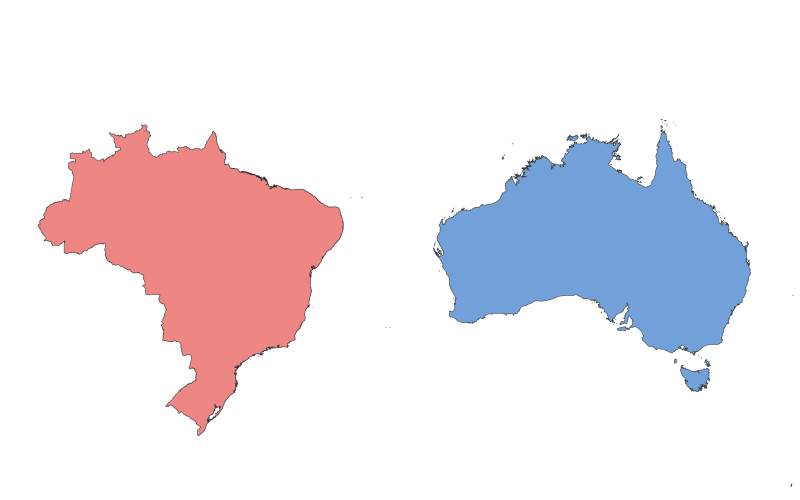Brazil vs. Australia: A Geographical Comparison

Comparison Table
| Category | Brazil | Australia |
|---|---|---|
| Location | Eastern South America | Oceania (continent between Indian and Pacific Oceans) |
| Size | 8.5 million km² (5th largest) | 7.7 million km² (6th largest) |
| Climate | Tropical (Amazon), temperate (south) | Arid (interior), temperate (coastal) |
| Natural Resources | Iron ore, timber, hydropower | Coal, iron ore, gold, natural gas |
| Urban Development | São Paulo, Rio de Janeiro (dense) | Sydney, Melbourne (spread out) |
| Transportation | Road-heavy, limited rail | Extensive road and rail networks |
Description of Brazil and Australia
Brazil
Brazil, the largest country in South America, is known for its vast Amazon rainforest, vibrant culture, and diverse ecosystems. Its history includes Portuguese colonization, which heavily influenced its language (Portuguese) and culture. Brazil has a mixed economy, with strong agricultural (soybeans, coffee) and industrial sectors. The country is famous for its Carnival, samba music, and football (soccer) passion. However, it faces challenges like deforestation and income inequality.
Australia
Australia, the world's smallest continent and largest island, is renowned for its unique wildlife (e.g., kangaroos, koalas) and expansive Outback. British colonization shaped its English-speaking culture and political system. Australia has a high-income economy driven by mining, agriculture, and services. Cities like Sydney and Melbourne are global hubs for education and tourism. The country faces environmental issues like droughts and bushfires but is known for its high quality of life.